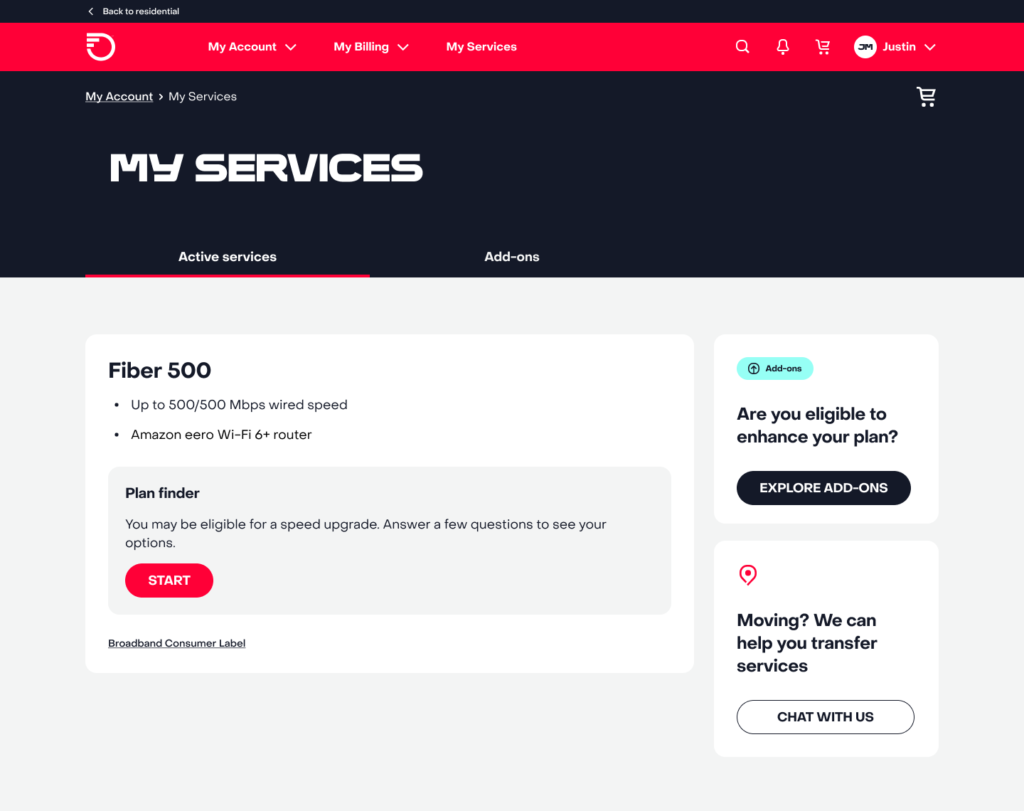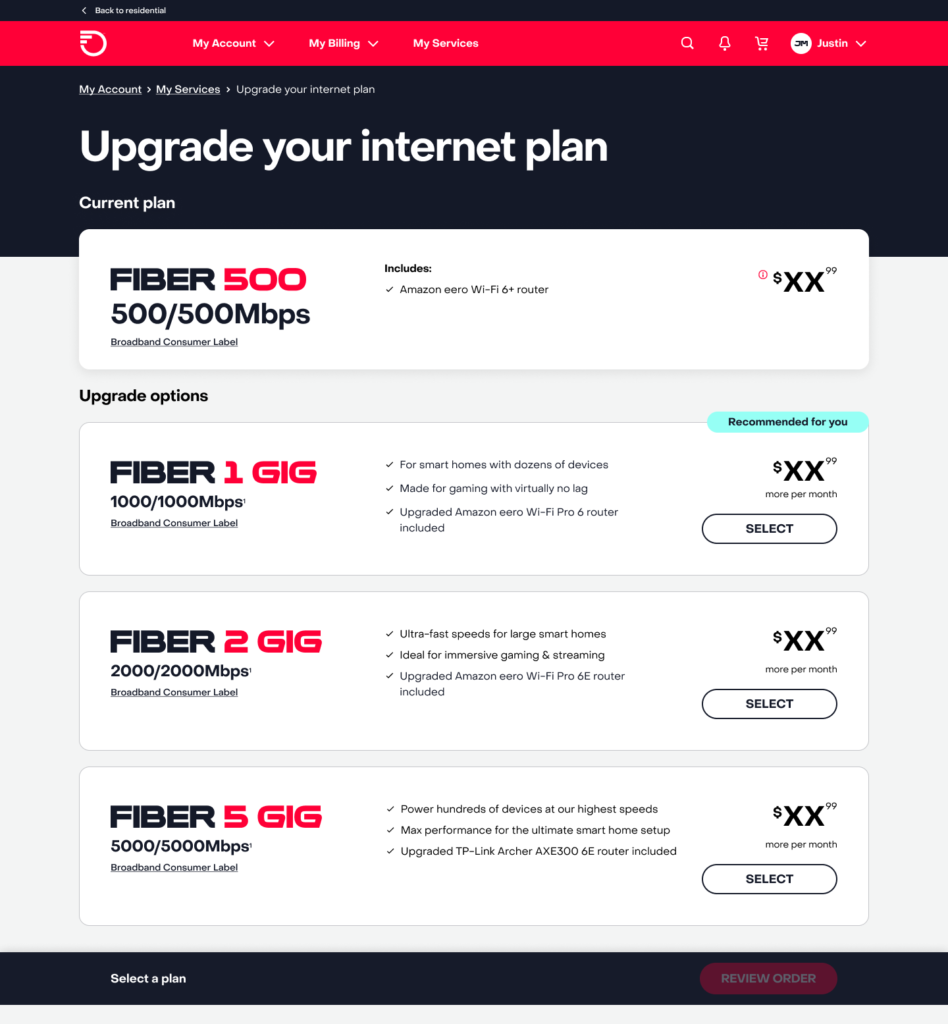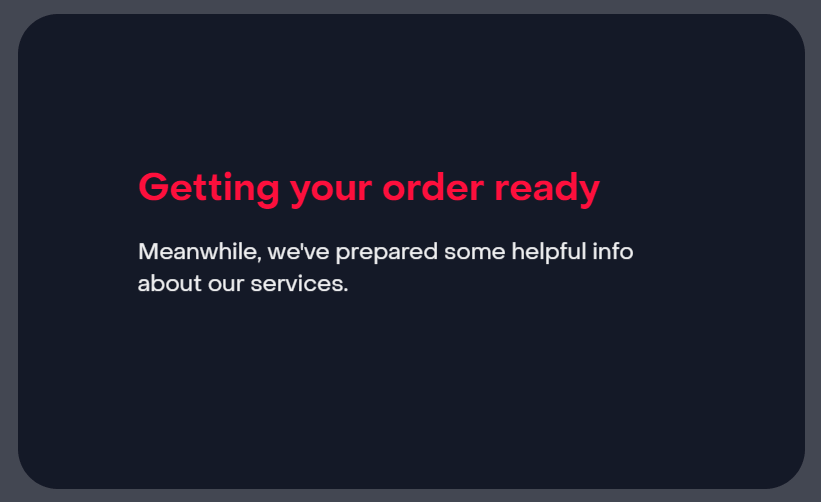Frontier
Speed Upgrades
Frontier customers traditionally had to call an agent to upgrade their internet speed, a process that created friction and limited sales. We introduced a self-service feature that allowed customers to compare, select, and order new internet plans directly within their account—making upgrades faster, easier, and more transparent. This streamlined experience boosted sales, reduced support calls, and gave customers more control over their service.
Feature
Enabling customers to upgrade their own internet speed plan at any time.
Users
Current Frontier fiber internet customers.
Benefit
Increased sales and engagement, reduced call volume
My role
Content designer collaborating with UX designer and researcher.
Timeline
2023 - 2024
Goal
Increase fiber sales and customer satisfaction by introducing a digital-first speed upgrade experience that reduced reliance on call centers and improved web and app engagement.
Challenge
Shifting a traditionally agent-assisted upgrade process into a self-service experience required overcoming several customer and technical barriers.
- Low awareness and education — Many customers didn’t fully understand their current plan’s limitations or the benefits of upgrading. We needed clear, digestible content to guide them through unfamiliar options and empower informed decisions.
- Decision friction — Customers faced decision paralysis when comparing multiple plans and were wary of hidden costs. We had to reduce cognitive load, provide price transparency, and surface key details for quick comparisons.
- Behavioral shift — Most customers were accustomed to calling agents. Encouraging adoption of a new self-service feature meant designing a frictionless, intuitive journey that built trust and confidence.
- Technical delays — API and backend processing times risked user drop-off during key moments. We needed content and UX solutions that reassured users and kept them engaged while waiting.
We developed a prominent entry point within a customer's existing fiber plan information. A plan-finder questionnaire piqued users’ curiosity, enabled engagement and a natural transition into the sales flow.

My role & approach
As the lead content designer, I partnered with UX design, research, and product teams to shape a clear, confidence-building upgrade journey. I crafted concise, scannable plan details, simplified technical concepts through guided questionnaires, and used strategic microcopy to reduce friction and keep users engaged—especially during technical load times. Throughout, I applied content design best practices to empower decision-making and minimize cognitive load. Post-launch, I contributed to ongoing iterations based on user data and testing.
Concise, scannable plan details and pricing allowed customers to quickly compare the value between each option, decreasing the cognitive load for decision making.

Solution
We designed an end-to-end upgrade flow that prioritized clarity, ease of use, and customer empowerment.
- Contextual entry point — Customers could start the upgrade journey directly from their current plan details, enabling discoverability and seamless comparison to available upgrades.
- Plan finder questionnaire — A brief, interactive tool guided users to recommended plans based on household size, usage, and habits—helping simplify choices and reduce decision fatigue.
- Scannable plan cards — We used a stacked card layout to compare plans side by side with concise bullet points highlighting speed, price, features, and ideal use cases—supporting quick, confident decision-making.
- Educational loader content — During system processing times, we surfaced helpful content like Wi-Fi optimization tips, billing transparency info, and upgrade benefits to keep users engaged, reduce abandonment, and add value to the wait time.
Making wait time useful—while the system processes the upgrade, customers get helpful tips on Wi-Fi optimization, plan add-ons, and billing insights. This keeps users engaged and adds value to the experience, turning downtime into learning time.

Results
+20% orders
Self-service upgrades increased orders by 20% within 2 months.
$570K+ revenue
Generated over $570K in upgrade revenue within 9 months.
Higher engagement
Web and app visits increased as users explored self-service options.
Fewer support calls
Phone and chat inquiries dropped as customers upgraded on their own.
Reflection
This project showcased how thoughtful content design can drive sales, reduce support needs, and build customer confidence in self-service. Post-launch data revealed new insights that guided further optimizations, demonstrating the importance of iteration and continuous learning in UX.